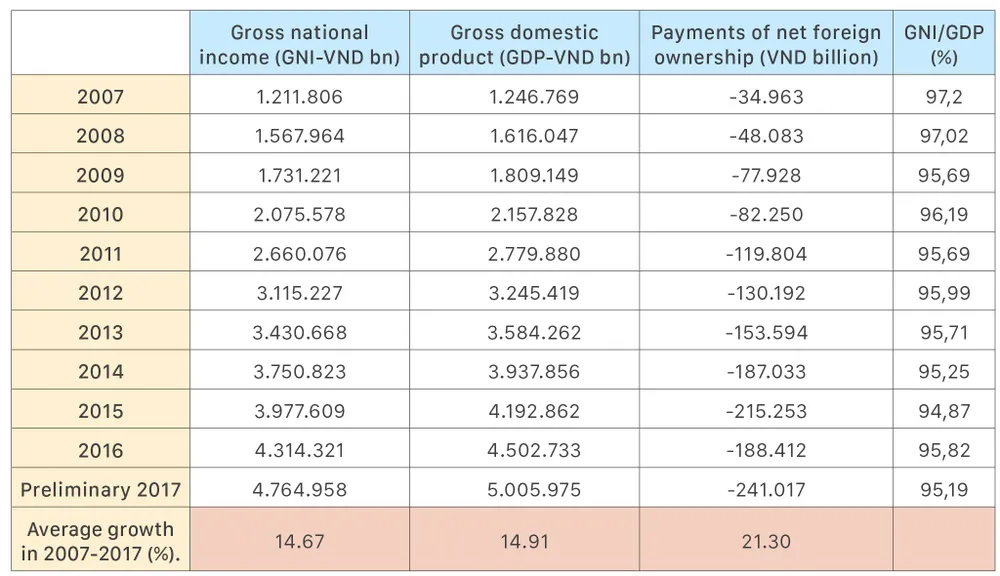
Important cash flow
Recently the World Bank (WB) forecast that the amount in remittances flowing into Vietnam in 2019 could be estimated at around USD 16.7 bn, up 4.6% compared to the previous year. According to the State Bank of Vietnam (SBV), remittances in 2019 reached a growth rate of 6-8% compared to 2018, at about USD 13-14 bn. In 2017 and 2018, remittances amounted to USD 13.8 bn and USD 15.9 bn, respectively. Thus, 2019 may be the third consecutive year that Vietnam remains among the top ten largest remittance receiving countries in the world.
The WB report also shows that the number of Vietnamese immigrant workers to Japan have increased the most, compared to other markets. Vietnam is also one of the nine countries that Japan has identified as a major source of foreign labour. In 2018, among the 142,800 Vietnamese people going abroad to work, 68,700 went to Japan, 60,400 to Taiwan, and 6,500 to South Korea. According to the International Labour Organization (ILO), in 2018, the average monthly income of Vietnamese people in Japan and South Korea was between USD 1,000-1,200, in Taiwan it was between USD 700-800, and in the Middle Eastern countries it was from USD 400-600.
In principle, the indicator that really counts towards the economy is when the available national income (NDI) is equal to the current national income (GNI), plus revenue from current transfer minus current transfer expenditure. This is the most important indicator reflecting the resources of the economy.
In Vietnam, remittances account for a majority of current transfers. This is an important cash flow that can offset losses when the FDI sector transfers money out of Vietnam. Vietnam may have to borrow, even leading to default, if the cash flow of remittances is missing.
This shows that, both formal and informal workers contribute to the Vietnamese economy in a very important way. This money comes from the sweat and tears of thousands of struggling Vietnamese workers abroad. In many cases, Vietnamese workers have difficulty in even accessing their rights at work. Debts due to labour migration fees and other miscellaneous charges are too high, which could be an obstacle preventing workers from leaving their workplace, to avoid exploitation or violent acts. According to ILO estimates, about 20% of the annual remittances received are from workers abroad.
GDP growth dependent on FDI sector
Ever since the National System of Accounts at the United Nations was implemented in Vietnam under the Government Decision 183 TTg, it seems that only the Gross Domestic Product (GDP) is used and commonly mentioned, and the reports of agencies and various studies only discuss and analyse the GDP. While the reality in the system of national GDP accounts is not the most important indicator. In addition to GDP, there are also indicators such as GNI, NDI, income from ownership, payment of ownership, transfer remittances, and savings. The resources of the economy are actually the basic resources for reinvestment. Saving sources include the NDI minus the final consumption, by households and by the Government. Therefore, if the savings are not enough to invest, the economy has to borrow.

This shows that the money flow through the property index or payment is increasing. The average growth in net payments of ownership over the period 2010-2018 at current price was 29%, while the GDP growth at current price over this period was 16%, so we can see cash outflows. Foreign growth grew faster than GDP by 13 percentage points.
In 2018, according to preliminary reports of the General Statistics Office, the payment of ownership reached around USD 18 bn. Much of this USD 18 bn is the FDI sector remitting money, after enjoying all preferential policies on investments in Vietnam. Estimated ownership payments in 2019 may be over USD 19 bn. One ironic fact of the Vietnamese economy is that the GDP growth is heavily dependent on the FDI sector.




















